I’ll admit it: as much as I like the power and pizazz of a supercharged desktop PC, there’s nothing like taking that performance on the go. That’s why the laptop is still very much alive, versatile enough to serve needs from gaming to 3D modeling to simply having a convenient all-in-one experience. Some modern-day laptops are strong enough to replace full desktops. Other lap-based devices, like the touchscreen-based 2-in-1s, stretch what the form factor is capable of, bringing in some tablet-like convenience.
The best overall laptop is the Apple Macbook Pro with M3. Yeah, we were surprised, too, but the MacBook Pro’s performance turns it into quite the portable workstation, and it can even do some light gaming, though the pickings can be a little slim on that front. Plus, it comes in black.
While it seems we’ve long reached the point when most manufacturers have figured out what does or doesn’t work with laptops, we’re still seeing designers stretch how many ports they hold, pure screen quality, and just how thin they can make these PCs. Not all laptops are built the same, and price doesn’t necessarily mean quality. It’s hard to parse the entire laptop landscape, so let’s walk through which product is best for your needs.
What laptop should I buy?
Your laptop buying decision should be defined by what you plan to do with the device and your budget. If it’s going to be your primary computer, sit on a desk, and never really move around or get packed in a bag, you don’t need to worry about size and weight. If you want to play video games, you’re going to need a faster processor. If you’re a road warrior, you want something small, light, and hard to break.
In our list below, we’ve identified several of those use cases and identified our top laptop pick for you. If money’s no object, you don’t have niche power user concerns like financial modeling, and you don’t care what operating system the hardware runs, go for our best overall laptop. Anything else, read on.
Finally, keep in mind that one of the rules of consumer electronics is that as soon as you buy a new gadget, it will immediately be eclipsed by a newer, faster, better model. We can say with confidence that chipmakers will continue to release powerful new processors in 2024, and laptop makers will roll out new products. But generally speaking, the first few months of the year are when we see the most new products announced and released.
The editorial staff of Gizmodo independently tests and reviews each product found in our Buyer’s Guides. If you purchase something using our affiliate links, G/O Media may earn a commission. Affiliate linking does not influence our editorial content.
Best Overall Laptop — MacBook Pro with M3

Apple declared its newest M3-powered products were “scary fast” during an event bearing the same name. They are, indeed, powerful machines, and all the benchmarks we were able to prove that. Yet the MacBook Pro is most comfortable when it’s running like it always has, for intensive tasks that allow users a fair bit of wiggle room so you’re not overtaxing your device. It can effectively power some heavy-duty rendering programs with ease. The M3 is, indeed, a more powerful chip than the M2. But depending on the user, that might not change much—or anything—about how you use Apple’s laptops sporting the company’s own silicon. Read More —Kyle Barr
Best Premium Laptop — Apple MacBook Pro 14-Inch and 16-Inch with M2
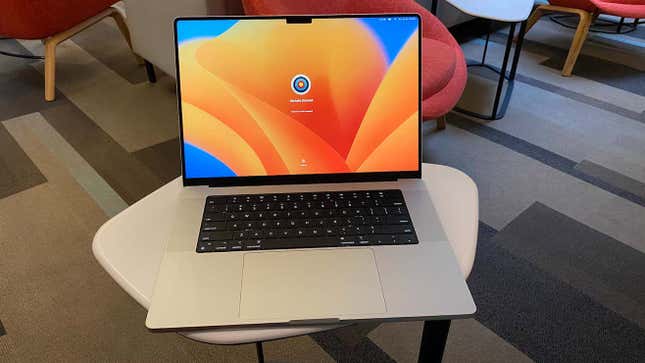
What’s maybe most impressive about this laptop is that it can actually be a capable gaming machine with the right support. Apple’s been working on getting developers to port their games to Apple Silicon since it debuted, and while the selection of native titles is still smaller than what you’ll get on Windows, these ports run well when they happen. We were able to consistently top 60 fps at a 1,920 x 1,200 resolution when playing Resident Evil Village on the MacBook Pro 16-inch with a Mac Pro, and while that’s not quite at the level of a premium gaming laptop, it’s enough for plenty of players.
There’s no doubt that this generation of bigger-screen MacBook Pros is pretty similar to the last generation, and we expect things to shake up more in future generations, with advances like touchscreens and OLED rumored to be on their way. For now, though, these are among the best premium productivity laptops you can get. Read More — Michelle Ehrhardt
Best Work Laptop — MSI Prestige 16 AI EVO
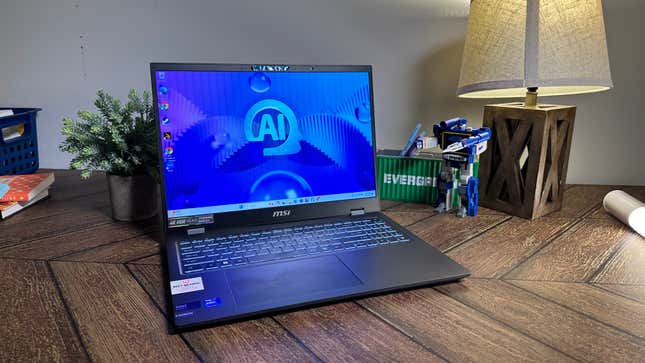
There’s little you could want more from a dedicated productivity laptop than you can get with the MSI Prestige 16. Ignore all the talk of “AI” for now since this laptop has a 4K OLED screen that’s as bright and beautiful as you need for your daily tasks, or more so, watching Netflix or YouTube videos while trying to ignore those tasks altogether. It’s relatively lightweight and thin, has a very nice and clacky yet subdued keyboard, and is packing an Intel Core Ultra 7 155H at and below $1,399, all of which is pretty good for that price point.
So now let’s talk about the AI. It’s the main selling point of the current generation of “AI PCs” since it has a few built-in features meant to streamline users’ experience. You won’t honestly see much of a difference between this and other PCs, but in benchmarks, the AI performance boost capabilities did put the Prestige 16 above the competition. Unless you’re doing a lot of rendering, you probably won’t notice any real difference. While 4K and OLED are becoming far more mainstream, the Prestige 16 has some of the best stats for its price point, making it one of the best devices you can use for daily productivity tasks. Read More — Kyle Barr
Best Gaming Laptop — Razer Blade 16 (2024)
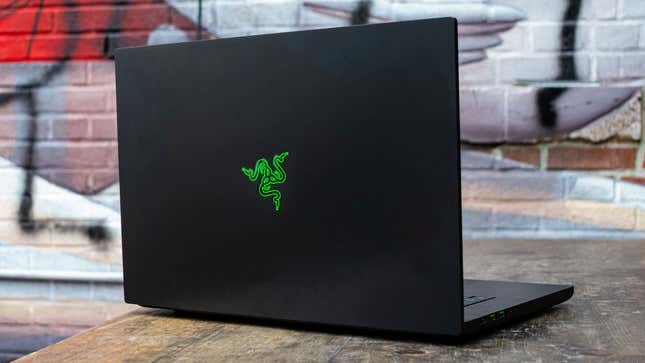
The Razer Blade 16 is the same as it ever was, AKA damn nice to look at and use. The 2024 Blade 16 refresh brought on a new OLED display boasting 240 Hz max refresh rates. Normally when you’re buying up a high-refresh panel, you first have to consider if your gaming hardware can actually support those frames. As you can already guess, the latest Blade is up to the task thanks to its Nvidia GeForce RTX 4090 mobile GPU and its 14th gen Intel Core i9 14900Hx.
Just know you’ll need to pay a pretty penny for all that beefiness. The laptop starts at $3,000, $400 more than the 2023 model (which is still available if you don’t care about OLED or high refresh rates). Performance between this year’s and last year’s Blade 16 is mostly on par. Not to mention, Razer still hasn’t fixed palm rejection on its trackpad or made its keyboard any more fun to type with. Those caveats don’t do enough to detract from the Blade 16’s appeal, but we do hope for something more dramatic with newer Blades down the line. Read More — Kyle Barr
Best 14-inch Laptop — Asus ROG Zephyrus G14
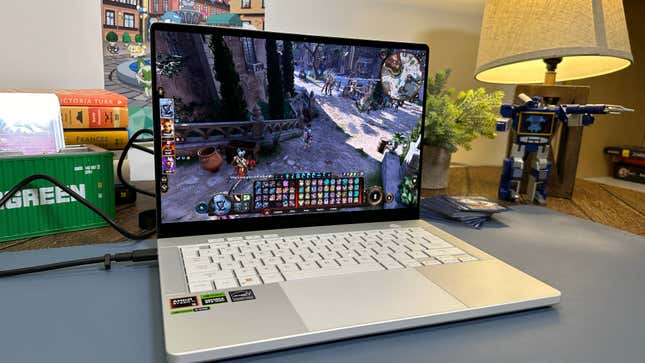
It’s a category that emphasizes maximizing power and performance compared to the 15-inch, 16-inch, and even larger laptops. At the same time, people buying a 14-inch notebook want something that is portable, which is why the MacBook Air has reigned for so long among other pint-sized laptops. However, the 2024 version ROG Zephyrus G14 takes the top spot thanks to the added gaming capabilities and beautiful design that hits the sweet spot of power, size, and price.
It’s a well-designed laptop whether you’re using it to run through your Steam library or simply catch up on streaming shows you haven’t had the chance to watch. It has a gorgeous OLED display that’s bright and fast and a keyboard that’s simply a joy to type on. Plus, it weighs just 3.3 pounds. It’s not as slim as the MacBook Air, but with a GPU that goes up to an Nvidia GeForce RTX 4070, it has far more graphical horsepower.
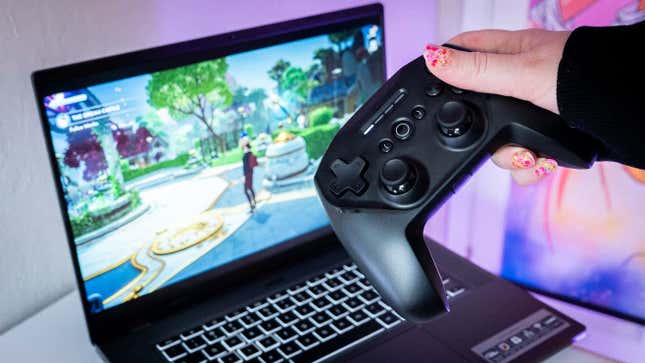
On the productivity side, the Chromebook 516 GE is fine for day-to-day use. The keyboard is comfortable for long bouts of typing, and ChromeOS has improved since Google introduced more ways to sync up the software with an Android smartphone. But this is far from a gaming laptop like in the Windows world. If anything, at least Chromebook manufacturers have found a way to “beef up” the systems without increasing the price point, as Chromebooks are still considered secondary machines rather than primary ones. Read More — Florence Ion
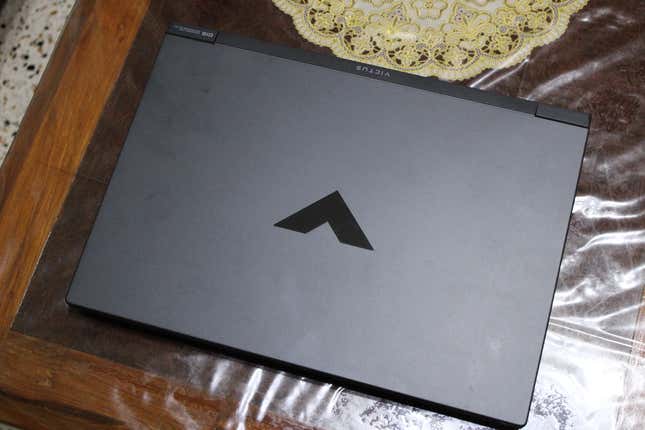
The HP Victus 15 isn’t free from compromise, but it’s got great value. Starting at $800, it’s far from the top-of-the-line but still allows you to get in the PC (and portable) flexibility without paying significantly more than you might for, say, a PS5. Our configuration costs $645, which is a bigger ask, but we have snagged an RTX 3050 Ti, 16GB of RAM, and 512GB of storage. If ray tracing isn’t important to you, you might be able to make do with the cheaper models that use a GTX 1650.
Aside from the internals, the Victus 15 gets you the wide variety of I/O that gamers need, an unintrusive (if plasticky) design, and a 144Hz screen that allows for smoother gameplay and surprisingly deep blacks. During our testing, it can also perform above its price point, hitting 96 fps on Shadow of the Tomb Raider’s 1080p benchmark.
If you’re the type of person who cares more about fundamentals than flash, there’s plenty to work with here. Read More — Prakhar Khanna
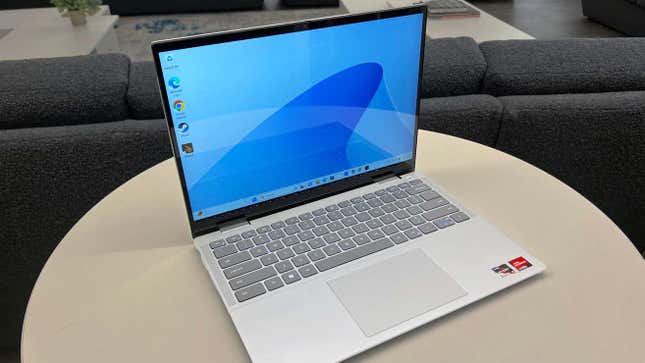
A budget laptop has to walk a very fine line. Cut too many features, and it’s going to offer disappointing performance and be annoying to use, no matter how low the price. Get too ambitious, and feature creep will drive the price up so much that it’s no longer a budget laptop.
So, while it’s missing a few of my preferred features and components, I walked away mostly impressed with this $750 version of the Dell Inspiron 14 2-in-1 I tested as part of Gizmodo’s Back-to-School guide.
The bottom line is that you can get a slimmer, more design-friendly laptop in this price range, yet probably not one with this many features, plus a decent screen size for all-day use. There are some compromises in the design and performance; if you’re willing to drop a few hundred dollars more, the options expand greatly. It’s not an especially fancy-looking or feeling machine, but it covers a lot of ground for a very reasonable price. Read More — Dan Ackerman
This list is updated regularly with new recommendations and product forecasts.




















+ There are no comments
Add yours